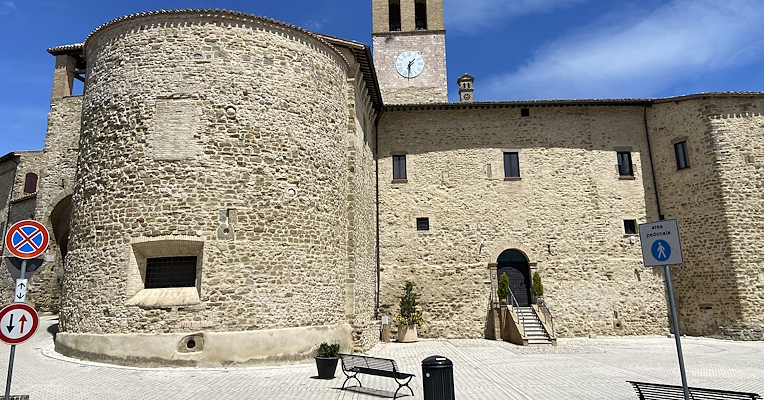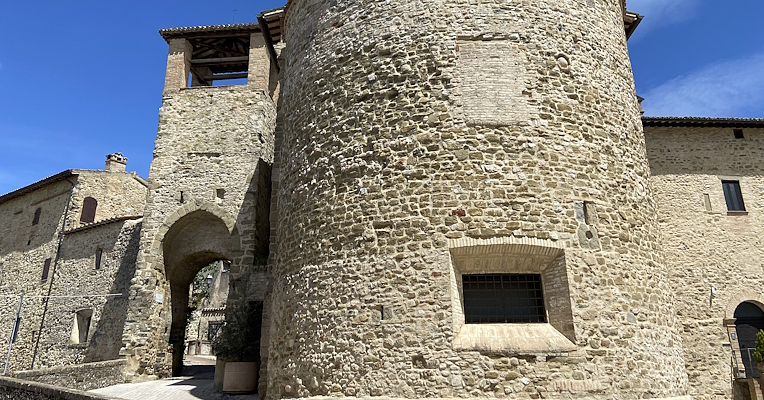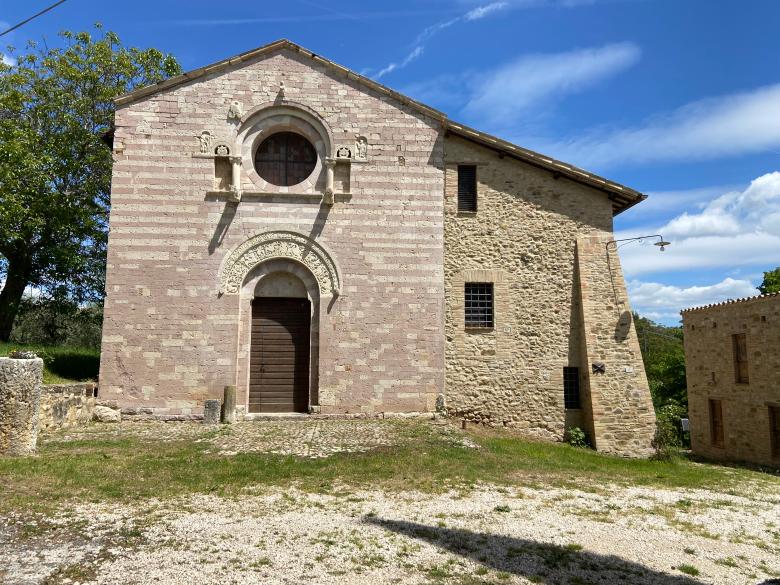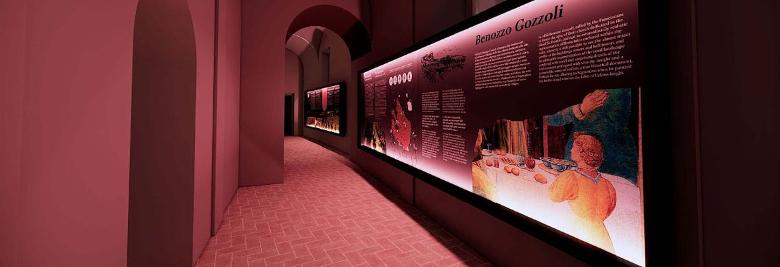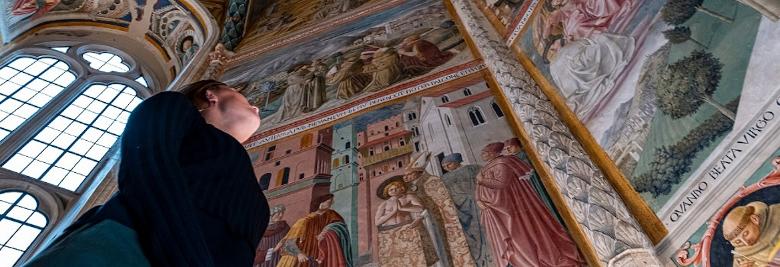Her accuser also venerated her, after having been taken by a demon and then freed from it.
Since that day, the cult of Saint Marina took over. Many are the vicissitudes of the Holy corpse of Saint Marina, but no one knows how and when she became Patron of Ritaldi Castel. The fact is that devotion toward the saint is still alive. A wooden statue with very little angels still represents her in the inside of the church, in a glass case. She holds a baby and has a noble lovely and suffering face. When the parish was transferred from the Parish Church, this became the nerve center of the county associations for the sacraments and the village life.
There were an old monastic choir in the Gothic style, and an organ in the choir loft, both since disappeared. The presbytery (although it is said it has been ruined), was raised by two steps and enclosed by an arch resting on two pillars. Under the old grid floor, there is crypt where the SS. Sacrament Society meets. To the right of a niche with a fresco by Tiberio of Assisi (a disciple of Perugino). In the Calaotta, the Eternal Blessing Christ is depicted in of golden clouds with a globe in his hand and an iridescent arc; all around nine seraphs and two little angels.
In the center of the drum is St. Catherine the Martyr of Alexandria with Tobiolo (and Raphael the archangel) on the left and Pope St. Sylvester I (above a dead dragon) on the right. Under the basin is a band of text, not easily decipherable. To the left of the main altar is another, dedicated to the Madonna del Soccorso. On the wall is a picture of the Virgin with a large starry mantle, who frees a child possessed by a demon, driving him away with a rope. Also depicted is the Desolate Mother and the little bed, in a bright landscape with people and trees. The scroll below bears the words "Sancta Maria populo castri Ritaldi, 1509". Legend tells about the painting which refers to a true story in which a woman, unable to get her baby to sleep, invoked the devil, but at once regretted it and she implored the Virgin Mary. The panel is attributed to Melanzio of Montefalco. At the bottom was a crucifix of the 1300s (now in the sacristy) and an altar, which was demolished. A fourteenth-century fresco with many saints is in the apse. In the chapel dedicated to St. Anthony Abate, a fragmentary series of frescoes and an altar dedicated to Santa Marina on the wall next to the sacristy.
Source: "A Castel Ritaldi tra storia, arte e poesia" - Mario Tabarrini
























